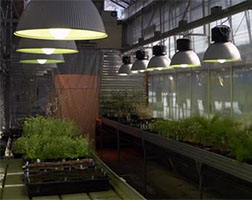 The concept of photoperiod , also mentioned as photoperiod (without accent on the I ), is used in the field of biology to refer to the daily time that a living being is exposed to light . During this period, various processes are carried out in the plant organism that allow the regulation of its biological functioning .
The concept of photoperiod , also mentioned as photoperiod (without accent on the I ), is used in the field of biology to refer to the daily time that a living being is exposed to light . During this period, various processes are carried out in the plant organism that allow the regulation of its biological functioning .
In a broad sense, it can be said that the notion of photoperiod covers both the time of exposure to light rays and the processes that this exposure produces in the plant. The alternation between day and night, solar cycles and seasonal changes determine the effects of the photoperiod.
Exposure to light influences the germination and development of plant species: depending on the number of hours a plant receives light , it can grow more or less. The photoperiod causes a species to grow less in winter than in the rest of the year, for example, since the days are shorter and growth, in this framework, is interrupted.
Light signals are recognized by plants through receptors that capture and translate them, triggering various reactions. Phototropism is one of the phenomena directly linked to photoperiod.
It is possible to classify different plant species based on the way they respond to photoperiod, since many of their activities are determined by the length of the day (an example is flower production ). In this framework we can talk about short-day plants , whose flowering only occurs on short days, or it is then that this production process is accelerated; There are also long-day plants , which need significantly more exposure to sunlight.
There is a third class of plants, called neutral plants , whose response to the photoperiod is null; In their case, flowering occurs through autonomous regulation mechanisms.
 Photoperiodic induction is known as a regulated process that takes place at the moment in which the leaves of a plant recognize the photoperiod through the use of receptors called phytochromes and photoreceptors , and send signals to the apical shoot (the one that is produced from of a terminal bud , that is, one that is at the tip) so that it begins to produce flowers.
Photoperiodic induction is known as a regulated process that takes place at the moment in which the leaves of a plant recognize the photoperiod through the use of receptors called phytochromes and photoreceptors , and send signals to the apical shoot (the one that is produced from of a terminal bud , that is, one that is at the tip) so that it begins to produce flowers.
In greenhouses, the exposure of plants to light can be done artificially, as well as many other phenomena. The lighting installations in these spaces are divided into two well-defined types, according to their classification: on the one hand there are those that serve for photosynthetic assimilation , for which sodium lamps are used; In the case of photoperiod control, incandescent lamps are usually used.
For cut flower crops (where we find paniculata, kalanchoe and chrysanthemum, among others) the lighting installations offer the possibility of controlling the duration of the photoperiod through the fusion between artificial light and a shading mesh , and the cycles are programmed for automated execution; For example, operators can set the lights to stay on for ten minutes and then turn off, only to come back on twenty minutes later.
It is important to mention that photoperiod also affects animals . Environmental factors affect sexual behavior and, therefore, the reproduction and breeding of new specimens. In short, all living beings carry out their vital processes according to the conditions of the environment, both due to light and other variables.
